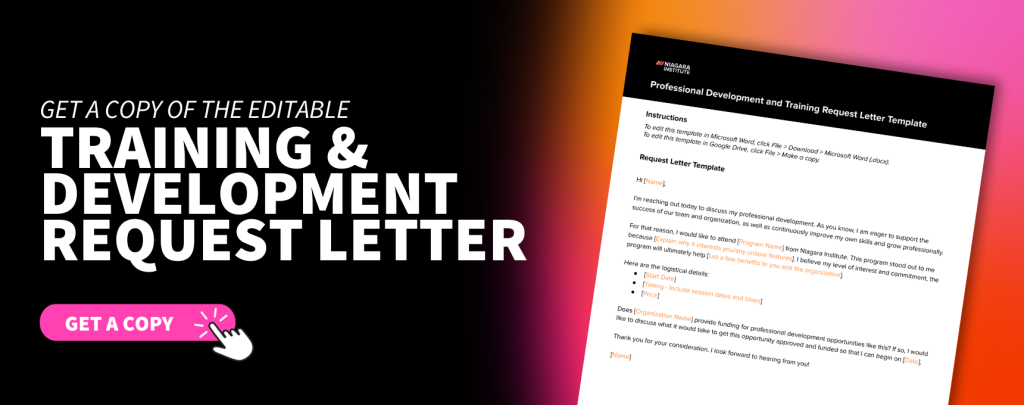Master Balancing Work and Family Daily Schedule Tips for Success

The Struggle for Balance
In today’s fast-paced society, the quest to balance work and family life is a challenge that many individuals grapple with daily. As remote work and flexible schedules become more prevalent, the once-clear boundaries between professional obligations and personal life continue to blur, adding complexity to an already hectic lifestyle. Developing effective strategies to achieve a rewarding work-life balance is essential not only for individual well-being but also for fostering healthy family dynamics.
When crafting your daily schedule, consider some key factors that can significantly influence your workflow:
- Prioritization: Take the time to identify what truly matters in both your work and family life. For instance, if your child has a school event or an important family gathering, it should be considered a priority over non-urgent work tasks. Making lists and categorizing tasks into ‘urgent’, ‘important’, and ‘no immediate deadline’ can aid in maintaining focus on what holds the most value.
- Time Management: Organizing your day can greatly enhance your productivity. Utilize digital calendars or planners to allocate specific time slots for work tasks, family activities, and self-care. Research shows that individuals who block out time for ‘deep work’ during their most productive hours tend to complete tasks more efficiently—leaving more room for family engagement in the evenings. For instance, utilizing tools like Google Calendar or apps like Trello can help you visualize your commitments and efficiently manage your time.
- Communication: Maintaining open channels with both family and colleagues is vital in navigating the complexities of a balanced life. Regular family meetings can help to ensure that everyone’s needs are met and understood. At work, consider expressing your workflow to supervisors or co-workers; this transparency allows for flexibility during crucial family moments and fosters a supportive work environment.
Research indicates that individuals with well-planned schedules often report higher levels of productivity and more satisfying family relationships. The act of properly allocating time not only enhances career performance but also strengthens connections with loved ones. For example, the Harvard Business Review notes that employees who feel supported at home and work experience lower stress levels, leading to increased engagement in both areas.
In the following sections, we will delve into actionable tips and techniques to assist you in effectively managing your daily schedule. You will discover how small adjustments, such as setting boundaries around work hours or integrating family activities into your calendar, can lead to considerable improvements in both your professional and personal life. Prepare to take control of the chaos around you and create a harmonious balance tailored specifically to your needs!
SEE ALSO: Click here to read another article

Crafting Your Optimal Daily Schedule
Balancing work and family life often feels like a juggling act, but with the right approach to scheduling, you can create a routine that not only accommodates your professional responsibilities but also enriches your family relationships. This begins with a few key strategies to master your daily schedule effectively.
Set Clear Boundaries
One of the most crucial steps in finding balance is setting clear boundaries around your work hours. This involves designating specific times when you will focus on work-related tasks and times when you will be completely dedicated to your family. According to recent studies, individuals who maintain strict work boundaries report feeling less stressed and more present with their loved ones. For example, you might decide that work hours are from 9 AM to 5 PM, with no email checking or calls during family dinner from 6 PM to 8 PM. By establishing these distinctions, you can reduce feelings of guilt that often arise when you’re partially focused on work while trying to engage with family.
Incorporate Family Time into Your Schedule
Integrating family activities into your daily schedule not only creates cherished memories but also helps ensure that those relationships remain a priority. To effectively incorporate family time, consider the following:
- Plan Family Meals: Schedule at least one mealtime together each day. Whether it’s breakfast, lunch, or dinner, sharing a meal fosters communication and connection.
- Weekly Family Activities: Block out time each week for a family game night, movie night, or outdoor adventure. These planned activities provide everyone with something to look forward to and help strengthen family bonds.
- Daily Check-Ins: Even short moments count! Dedicate a few minutes each day, perhaps during a morning coffee break or right before bed, to catch up with family members on their day.
By consciously scheduling family time, you may find that it leads to a happier, more cohesive family unit. Parents who involve their families in their planning process typically see a boost in emotional support and understanding, thereby easing the pressures of day-to-day life.
Embrace Flexibility and Adaptability
While having a structured schedule is important, it’s equally vital to remain flexible. Life can be unpredictable, and sometimes priorities shift unexpectedly. Embracing this flexibility not only allows you to adapt when emergencies occur but also teaches your family valuable lessons about resilience and adaptability. Maintain a mindset that welcomes change, and don’t hesitate to adjust your commitments as necessary to accommodate family needs. For instance, if your child falls ill or needs your attention, be ready to reallocate your tasks and reschedule them for a later time. This adaptability will enhance your ability to manage stress and prevent burnout.
As you develop your daily schedule with these strategies in mind, you’ll begin to discover a rhythm that works for you and your family. The journey towards mastering the balance between work and family life may have its challenges, but it is indeed achievable and worthwhile. In the next sections, we will explore additional techniques to refine your scheduling practices further, enabling you to harmonize your professional ambitions with your family values.
| Advantage | Description |
|---|---|
| Effective Time Management | Prioritizing tasks helps to streamline daily activities, allowing for designated family time while fulfilling work obligations. |
| Improved Family Relationships | Consistency in scheduling fosters stronger bonds with family members, ensuring that quality time is not compromised by work commitments. |
| Increased Productivity | Balancing work and family leads to heightened focus and motivation, resulting in enhanced performance both at home and the workplace. |
| Stress Reduction | Establishing a routine can ease anxiety related to missed responsibilities, allowing individuals to thrive in their dual roles. |
SEE ALSO: Click here to read another article
Optimize Your Time Management Techniques
Mastering the art of balancing work and family requires more than just a schedule; it demands effective time management techniques that empower you to make the most of every moment. By utilizing proven strategies, you can enhance productivity at work while also carving out quality time for your family.
Utilize Time-Blocking
One effective method to manage your time is called time-blocking. This technique involves dividing your day into distinct blocks of time dedicated to specific tasks or activities. By allocating set periods for work responsibilities, family time, and personal activities, you create a visual roadmap of your day.
For instance, you might block off 9 AM to 11 AM for focused work tasks, followed by a brief 20-minute break, then a block from 11:30 AM to 12:30 PM for family check-ins. Utilizing digital calendars can help you visualize these blocks, making it easier to see where your time is allocated. Additionally, this practice can reduce the urge to multitask—a common hindrance to both productivity and family connection.
Prioritize Tasks with the Eisenhower Matrix
Another tool to enhance your scheduling effectiveness is the Eisenhower Matrix, which helps prioritize tasks based on urgency and importance. By sorting tasks into four quadrants—urgent and important, important but not urgent, urgent but not important, and neither urgent nor important—you can identify what deserves your attention right away and what can be scheduled for later. This systematic approach allows you to maximize your efficiency during work hours, ultimately freeing up additional time for family.
For example, urgent meetings or deadlines would fall into the “urgent and important” category, while planning a family outing may be classified as “important but not urgent.” This clear distinction helps ensure that critical work tasks do not overshadow family commitments.
Leverage Technology Wisely
In today’s tech-savvy world, leveraging productivity apps and tools can significantly enhance your scheduling prowess. Applications like Todoist or Google Calendar help keep your tasks organized and offer reminders for important events, whether at work or home. Moreover, you can sync schedules with family members, allowing everyone to stay on the same page.
However, it is crucial to maintain a balance in technology use. Allocate specific times for checking work-related notifications to minimize distractions that could take away from valuable family moments. Setting “do not disturb” hours can also help maintain this balance by ensuring that your focus remains on your family when it matters most.
Evaluate and Adjust Regularly
As with any strategy, regularly evaluating and adjusting your schedule is essential for ongoing success. Take a step back each week to reflect on what worked, what didn’t, and how your schedule aligned with your work and family vision.
Consider conducting family meetings during your scheduled family time to gather input on their needs and preferences. This ensures that while you may have planned your days in advance, you remain adaptable and responsive to family dynamics and growing responsibilities.
Incorporating these time management techniques into your daily routine is a game changer. They will not only enhance your time management skills but also lead to an enriched family life, making it easier to achieve the ultimate goal of balancing work and family commitments seamlessly.
SEE ALSO: Click here to read another article
Conclusion: Achieving Harmony in Work and Family Life
Finding the perfect equilibrium between work and family is not just a dream—it’s a tangible goal that can be achieved through dedication and effective techniques. As we’ve explored, embracing time management strategies, such as time-blocking and the Eisenhower Matrix, allows you to prioritize your responsibilities and focus on what truly matters in both arenas. By organizing your day into structured blocks, you can ensure that neither work obligations nor family moments go overlooked.
Moreover, leveraging the power of digital tools equips you with the flexibility to manage your time efficiently while maintaining essential family connections. However, it’s imperative that we remain mindful of our technology use to safeguard precious family interactions from distraction. Regularly evaluating and adjusting your schedule promotes a dynamic balance, allowing your plan to evolve alongside your family’s changing needs and unforeseen challenges.
Ultimately, mastering the art of balancing work and family life is an ongoing journey. By implementing these practical tips and continuously seeking opportunities to connect with both your career and loved ones, you’ll build a rich tapestry of experiences worth cherishing. So, take charge of your time, engage your family in the process, and unlock the success that arises from a harmonious work-life balance—your family will appreciate it, and so will your productivity.



